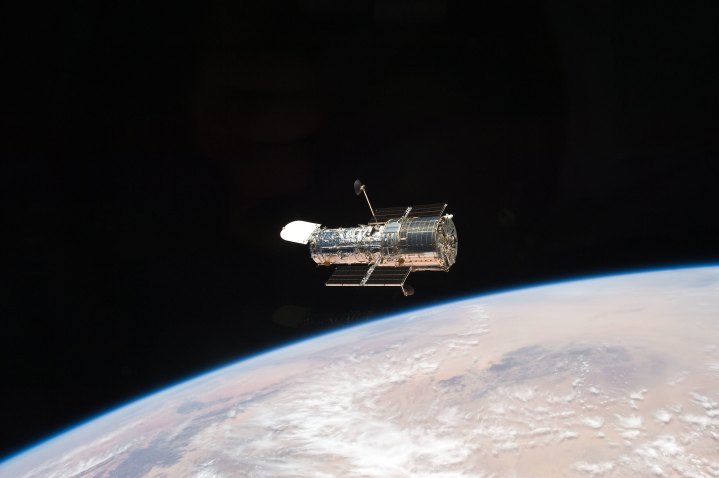
The Hubble Space Telescope, in orbit around Earth, paused its operations this week following a software issue. With the issue now resolved, the telescope has begun its scientific operations once more, although one instrument remains suspended for now.
Last week, on Sunday, March 7, a software error was detected in the craft’s main computer. The telescope went into safe mode, as it does whenever an error is detected, so the team on the ground could fix the problem.
NASA personnel from the Goddard Space Flight Center found that the problem was due to an error in recently uploaded software that controls the craft’s gyroscopes. These devices measure the speed at which an object is turning and are used to keep the telescope stable. In normal science operations, they are needed to help Hubble lock on to a new target for study.
The recently uploaded software was written to compensate for fluctuations in one of the gyroscopes, but it did not have the permissions to access one part of the computer’s memory which it needed. This lead to the error which triggered the safe mode.
Now that the team knows what the problem is, it can be corrected in a future software update. For now, the team has disabled this particular function so the telescope can continue its work. By Thursday, March 11, Hubble had exited safe mode and resumed its science readings.
However, there is one more issue to fix. One of Hubble’s instruments, the Wide Field Camera 3, experienced an unexpected error. This seems to have happened when the telescope was moved from safe mode into what is called its “pre-science state,” before it entered science mode. The team is now working on getting this instrument back up and running.
“The Hubble Space Telescope returned to science operations on Thursday, March 11 at 8:00 p.m. EST. Wide Field Camera 3 remains suspended while the team investigates a low voltage issue that prevented it from returning to operations,” NASA wrote in a post. “The telescope has completed its first observation since returning to science mode, using the Cosmic Origins Spectrograph instrument to map gas flows in active galactic nuclei.”



